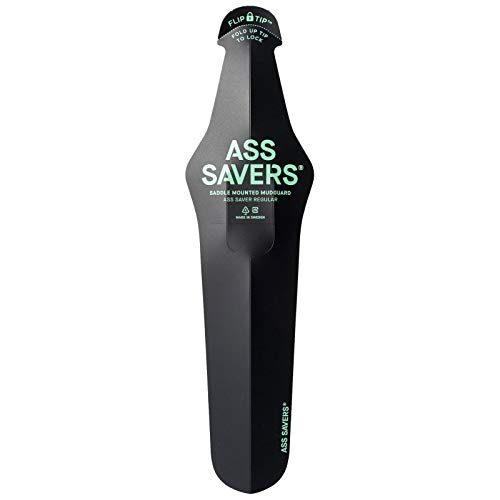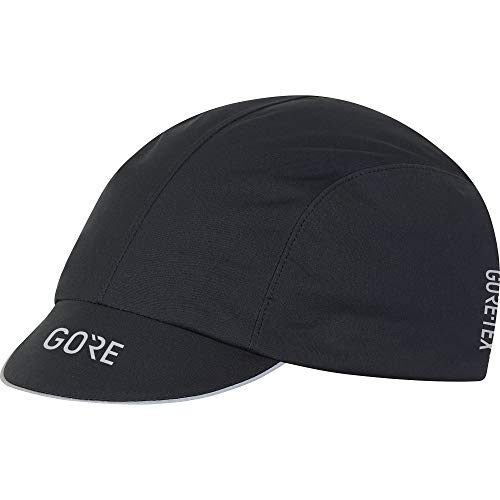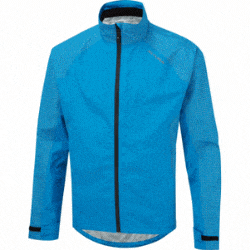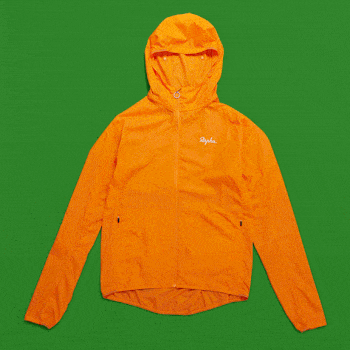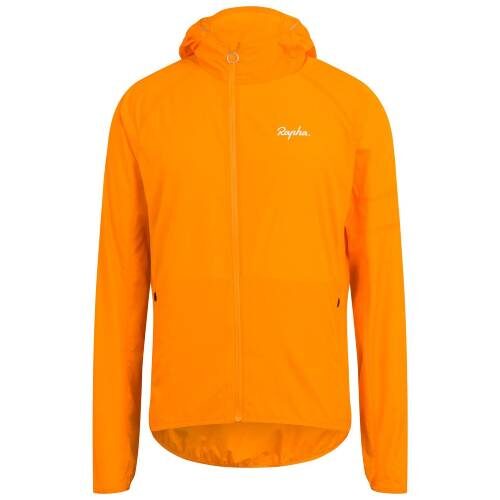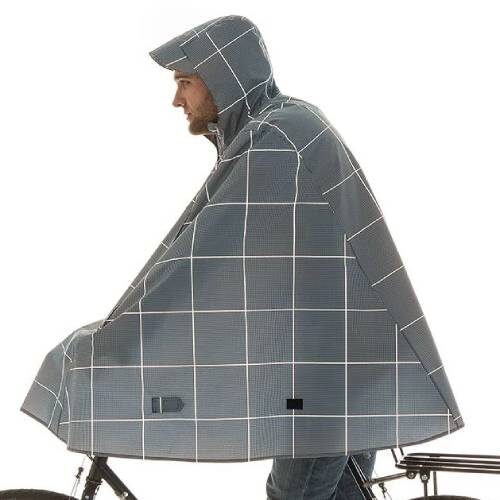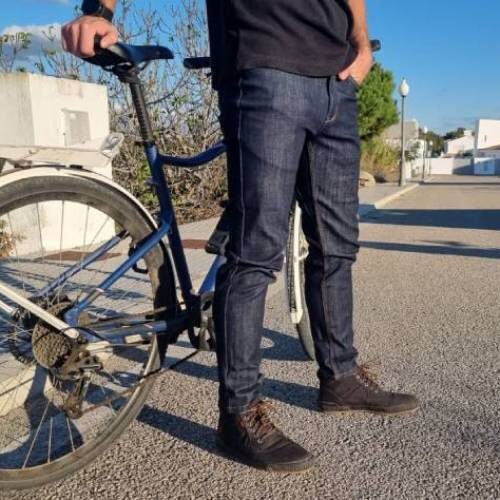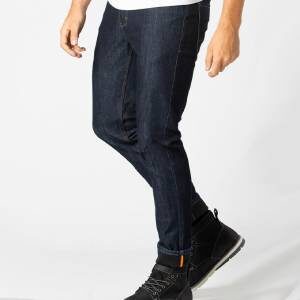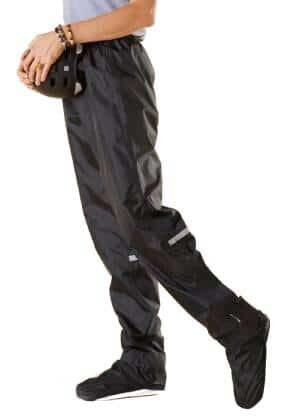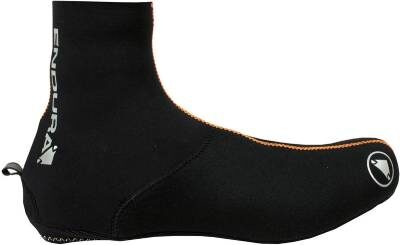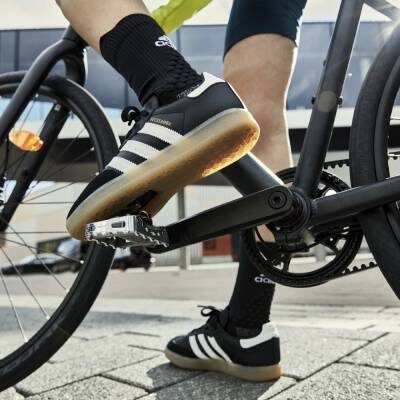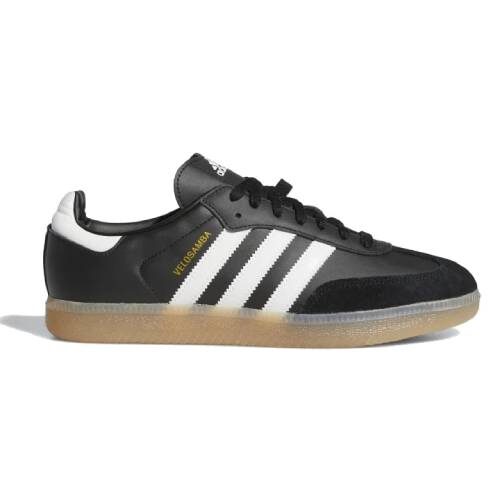Whether you’re cycling to work every day of the week, or intermittently, there are few things worse than getting soaked on your journey. Rain tends to make you cold, even in the summer. But on a winter’s day it’s a miserable experience to be wet and freezing, knowing you still have miles ahead of you.
Unfortunately, as a regular bike commuter there’s no avoiding wet days in the UK, where it rains around 170 days of the year. But happily, there are plenty of waterproof clothing options to keep you dry and warm, even on the foulest of days. In this guide, we’ll cover the different types of waterproof gear you may need.
How to Stay Dry While Cycling in the Rain
Clothing is our key focus here, but before we even look at what to wear, there are some other things to consider that can help you stay drier and more comfortable in the rain.
Mudguards
Investing in a decent set of mudguards for your bike is a good idea. Not everyone likes mudguards, it’s true. Sometimes they can rattle, which is just plain irritating. They also add a little weight to the bike – although this is negligible if you’re already carrying panniers with your work gear in. Mostly though, they’re simply (and perhaps unfairly) viewed as ugly.
However, the benefits of mudguards far outweigh the lack of visual appeal. Much of getting soaked on a wet day comes from the spray coming off your wheels, and mudguards protect you from a lot of this. Remember also, that roads will stay wet for some time, even after the rain has stopped.
You can get mudguards fitted to your bike permanently, or you can get removable mudguards from the likes of Ass Savers (below) which you can clip on and off in just a couple of seconds when you need them.
- Keeps your butt dry on wet roads
- New patented FLIP-TIP attachment system
- Easy to mount, requires no tools
Keep Your Head Dry
At the risk of stating the obvious, you’ll be a lot warmer if you keep the rain off your head. Although we only actually lose around 10% of heat through our head, it can feel like a lot more if the rest of the body is covered.
Any amount of brilliant waterproof gear can be somewhat negated if cold water is pounding through your helmet onto your scalp. Covering your head with a waterproof helmet cover, or a waterproof cap or hood under the helmet, will make a big difference.
Waterproof Cycling Gear for Commuting
[KEY CONSIDERATIONS]
There are a number of things to think about when choosing cycling gear to keep you as dry, warm and comfortable as possible.
Key Body Parts to Keep Dry
Keeping your torso dry is vital. A warm torso will keep the rest of your body warmer, allowing the blood to flow more easily to your arms and legs.
It’s also important to keep your hands and feet dry. Cycling with freezing digits is not only uncomfortable, but potentially dangerous if you’re losing feeling.
You’ll also want to keep your legs, and particularly your thighs dry. Cold, wet legs will affect your cycling performance as your muscles will have to work harder and your joints may tighten.
Ventilation
Even in cold, rainy weather, your clothes need to be breathable. A good jacket should keep the water out but also allow the sweat vapour to escape, otherwise you’ll be clammy, wet and smelly underneath your clothing.
Taped Seams
Water leaking through clothing seams is a common way to get wet. Waterproof tape protects the area around the seam stitching effectively. Sometimes a layer of sealant is used instead – a glue-like substance applied along the seam.
Adjustable Openings
Rain can easily find its way in through the openings around the neck and wrists, so it’s important to be able to adjust these and pull them in.
High Quality Waterproof Material
The clothing materials should have a durable water repellent (DWR) – a treatment applied to the outer coating, which is often used alongside breathable waterproof material such as Gore-Tex.
Best Waterproof Cycling Jackets for Commuters
The sheer range of waterproof jackets on the market can be something of a minefield to navigate. Each type has clear advantages and disadvantages, which we’ve broken down to help you decide which might be suitable for you.
Hardshell Rain Jackets for Cyclists
A hardshell cycling rain jacket is a lightweight, waterproof and breathable jacket with a hood, designed to be durable and windproof. They’re not as insulated as softshell jackets but give better protection from the rain, wind and snow.
As the name suggests, the ‘hard’ shell is made from stiffer fabric than a softshell and therefore less flexible, but this may not matter to you if it’s doing its job at staving off the elements.
Hardshell Cycling Jackets [Pros and Cons]
| PROS | CONS |
|---|---|
| Highly waterproof, combining a waterproof membrane with a DWR coating for rain protection | Less breathable than a softshell jacket – however, most use breathable membranes such as Gore-Tex, along with vents |
| Windproof, with tightly woven fabric and taped or sealed seams | Thinner and lightweight – you’ll need layers underneath to keep warm on colder days |
| Lightweight, so can be easily packed away | Stiffer fabric – can be less flexible and comfortable to ride in. |
OUR PICK: Altura Nightvision Thunderstorm Jacket
Available in bright red and blue (as well as black), the colour options of this jacket are very visible without screaming “cyclist high-vis” (if that’s not your thing). Ideal for commuters, the relaxed fit creates an ordinary-looking jacket that doesn’t present as cycling-specific.
But high-vis, it really is, and then some. In the dark or in low light, the 360 reflective panels covering a large area of the jacket’s front, back and arms, give incredible visibility when lit by car headlamps. This is a great safety feature that’s not obvious in the day.
Fully waterproof with taped seams and a water-resistant front zipper with a rear storm flap, the Nightvision jacket features Velcro adjustable cuffs and an elasticated hem to create an extra seal from the rain. There’s also a removable hood that can fit under a helmet.
Breathability is added by underarm vents, and there are also four pockets, including a large one at the back, all with waterproof flaps, for plenty of practical storage.
Packable Rain Jackets for Cyclists
Lightweight packable rain jackets are perfect if you’re unsure what weather is in store for the day ahead. Admittedly, this could be most days in the UK, but these jackets are easy to carry and handy for warmer days when it ‘might’ rain, or as an additional waterproof layer on colder days.
How small they pack up depends on the jacket, but most will fit into a pocket and have a built-in storage bag. Many also come with reflective detailing and a hood.
Packable Cycling Jackets [Pros and Cons]
| PROS | CONS |
|---|---|
| Waterproof with DWR coating | Less bulk means they are not warm – more suited for milder wet weather or as an extra layer in the cold |
| Breathable membrane | Not typically the most stylish |
| Extremely lightweight and portable |
OUR PICK: Rapha Lightweight Commuter Jacket
Rapha tends to be on the pricey side, but this jacket shouldn’t break the bank, and being fully waterproof, breathable and visible, it’s worth every penny.
Available in a range of colours, from mustard to high-vis pink, to the more muted navy, there is plenty of reflective detail on the cuffs, hood and hem, along with a reflective pixel-print on the rear. Great for commuting visibility on gloomy, wet days.
Made from 100% polyester, this jacket offers exceptional breathability, enhanced by the mesh yoke around the shoulders.
And it’s a stylish jacket with a relaxed fit, so you can look good and keep dry on your way to work.
A stunningly stylish jacket that is water and wind resistant, has a foldaway hood and can be packed down into it’s built-in pocket so you can throw it in a bag.
Waterproof Cycling Ponchos
Waterproof cycling ponchos could be seen as the Marmite garment of the cycling world. Also known as a rain cape, the poncho is a (very) loose-fitting piece of waterproof fabric that covers the whole of your upper body, hands and the tops of your legs when cycling.
Why Marmite? To be fair, their billowy design is far from sleek and may not be to everyone’s taste, but nowadays there are some surprisingly stylish ones out there. Provided it’s not blowing a gale, the poncho could yet prove to be one of your best friends as a commuter, and you could learn to love the weird and tent-like appearance.
Waterproof Cycling Ponchos [Pros and Cons]
| PROS | CONS |
|---|---|
| Good coverage – they protect a lot of your body | Not good for extreme weather – they do flap around and in high winds, rain will be blown underneath |
| Lightweight and easy to pack away | The loose material can snag easily on branches or other obstacles |
| Easy to put on – they just slip over your head | Not practical for covering backpacks |
| Well-ventilated – the loose design allows the air to flow | They may not win you many style awards |
| Versatile – a large piece of waterproof fabric can be used for all sorts of different things |
OUR PICK: Cleverhood Classic Rain Cape
Now, this is actually a highly stylish rain cape that Discerning Cyclist first reviewed back in 2012. But it stands the test of time and still holds its own as one of the best ponchos for cycling, on all levels.
It’s not cheap, but the quality is reflected in the price – and ‘reflective’ is really a key word here, as the entire garment has Scotchlite reflective threading woven through it. This makes it the ultimate high-vis poncho at night or in low-light conditions – with a classic, more subtle alter-ego by day.
It’s available in three sizes and is fully waterproof with sealed seams. It also has a host of extra features, including magnetic closures for the armholes, elastic thumb loops and Velcro trim tabs on the sides to help secure the cape in the wind.
READ: Top 5 Waterproof Cycling Ponchos
Best Waterproof Trousers for Commuters
Waterproof trousers essentially come in two camps – trousers that are water-repellant, and waterproof overtrousers that go over whatever you’re wearing underneath. Which is best for you will depend on the weather conditions, your riding style and how you want to look.
Water-Resistant Trousers for Cycling
‘Water-resistant’ cycling trousers offer a more normal look, and the water-repellant fabric provides adequate protection in showers. In heavy rain, however, the water will eventually penetrate.
Water-Resistant Cycling Trousers [Pros and Cons]
| PROS | CONS |
|---|---|
| They can look just like regular trousers – available in a range of styles | Not fully waterproof – suitable for showers and light rain |
| Lighter to wear – offering more flexibility and comfort than overtrousers | Stretch fabrics don’t allow for sealed seams |
OUR PICK: DUER’s All-Weather Denim Trousers
At good value for money, and with a state-of-the-art waterproof and windproof membrane, these trousers will protect you from moderate rain and keep you warm while they’re at it. And the best thing is that they’re jeans, and they look like jeans. If jeans are part of your work dress code, you won’t need to change when you get there.
They’re a comfortable fit too, with the L2X Performance Denim giving 4x more stretch than traditional denim, as well as being 30% lighter. And if that’s not enough, they also have maximum odour-neutralisation – ideal if you’re breaking a sweat on your journey.
A pair of great-looking jeans that do a remarkably good job of keeping you dry thanks to their waterproof and windproof membrane.
Also a great fit for cycling and offer plenty of stretch with 2% LYCRA featured in the material.
Waterproof Overtrousers for Cycling
To be 100% waterproof, trousers need sealed seams as well as waterproof fabric with a DWR coating. Although breathable, waterproof overtrousers will be warmer than water-resistant trousers as they’re providing an extra layer.
This is useful for cold and foul days, but I can tell you from experience, on a warm day you will boil in these things. The pay-off is that in the winter they’ll keep your legs totally dry and you’ll appreciate the warmth.
Waterproof Cycling Overtrousers [Pros and Cons]
| PROS | CONS |
|---|---|
| Effectively waterproof, with taped or sealed seams and DWR coating | Can feel cumbersome and restrict movement |
| Baggy enough to fit over regular trousers – you won’t need to take a change with you | Don’t always slip on easily over shoes – not ideal if you’re caught in an unexpected shower |
| Lightweight enough to carry if the weather is unpredictable | Not usually breathable which can lead to a build up of sweat |
OUR PICK: 100 City Cycling Overtrousers
Decathlon consistently offers virtually unbeatable value for money, and these good-looking overtrousers with attached shoe covers certainly don’t disappoint.
Specifically designed for cyclists (and not all overtrousers are), these are easy to pull on and off with rip-tabs on the lower legs and an elasticated waist. Decathlon are also refreshingly real with their marketing, stating that the 100 City trousers will keep you dry for “two hours of cycling” – which, unless you’re some kind of loon, should easily cover your commute.
The shoe covers are an excellent (and hard to find) addition, protecting you from rain running down or being splashed into the top of your shoes. And the reflective detailing, along with the option to attach lights to your calves, adds good visibility.
Best Waterproof Footwear for Commuters
Of all the rain-induced miseries, wet feet has to rank among the worst. Wet feet lose heat around twenty-five times faster than dry feet, so if they are soaked and freezing, you won’t feel warm no matter how many layers you’re wearing.
Waterproof Cycling Overshoes
Waterproof overshoes are a great option if you’re attached to your non-waterproof footwear, or if you simply want greater protection from the rain. The extra layer will keep your feet warmer, too.
Most are made from Neoprene and a decent pair should be completely waterproof. You’ll need to choose ones with good protection at the ankle to stop water seeping in over time, along with taped seams and a strong, waterproof zip.
Waterproof Cycling Overshoes [Pros and Cons]
| PROS | CONS |
|---|---|
| Give feet and ankles an extra layer of protection against the rain | Not practical for walking in |
| Some are insulated for more warmth | Some will let water in over time |
| Cheaper than waterproof shoes | Fiddly to put on |
TOP PICK: Endura Deluge Zipless Cycling Overshoes
Being zipless means one less thing to break or to let water in on these affordable overshoes made from stretch Neoprene. With an abrasion-resistant sole that is mountain bike and road cleat compatible, they’re suitable for all types of riding and have good reflective detailing.
Pulling them on and off without a zip will take getting used to, but there is a heel pull tab to make this easier.
Waterproof Shoes for Cycling to Work
Even if you’re wearing overshoes, it’s worth investing in a pair of waterproof shoes because frankly, your feet can’t have enough protection from the elements.
The beauty of waterproof shoes is that they don’t have to look like cycling shoes and can be worn easily on and off the bike. They come in just about any style – from urban trainers, to rugged boots, to sophisticated shoes suitable for formal office dress codes. The choices are endless.
Waterproof Cycling Shoes [Pros and Cons]
| PROS | CONS |
|---|---|
| Can be suitable for wearing all day at work | Water may still enter down leg |
| Huge range of styles and designs | Expensive |
TOP PICK: Adidas Velosamba Cycling Shoe
The Adidas Velosamba is designed specifically to be a cycling shoe, but without losing any of the iconic beauty of the Samba style, with the trademark 3-stripes – reflective in this instance.
As well as being staggeringly beautiful, this shoe includes features such as a reinforced, full-length plate for pedalling efficiency and two-bolt cleat compatibility.
With a hybrid outsole suitable for cycling and walking, this is ideal commuter footwear for workplaces with casual dress codes. On an ‘average’ rainy day they should protect the feet, but may not hold up 100% against a heavy downpour. But there is always the option to reinforce them with a good waterproofing spray or wax.
The Adidas Velosamba caused a storm when they were released and sold out everywhere very quickly – but now they’re easier to get hold of. Must be the most stylish urban cycling shoes of all-time and are capable of keeping off moderate rain.
Waterproof Cycling Socks
The importance of waterproof socks cannot be underestimated. Even the most high-spec waterproof shoes can let in some water over time with the onslaught of sustained torrential rain. There’s also the common problem of water spraying in or running down through the top of the shoe.
Waterproof Cycling Socks [Pros and Cons]
| PROS | CONS |
|---|---|
| Can keep your feet dry even when your shoes aren’t | More expensive than normal socks |
| Give more flexibility in terms of footwear | Some types are not as breathable and can cause feet to sweat |
| Add warmth as well as rain protection |
TOP PICK: Sealskinz Waterproof All Weather Mid Length Sock
Also recommended by a number of the Discerning Cyclist audience, these are fully waterproof and windproof socks with three layers – with Merino wool making up 36% of the inner layer.
Being super-warm and breathable too, these feel like normal socks to wear but can withstand even the most appalling torrents. And with a hydrostop water barrier to prevent rain running in through the top of the sock, they’re a perfect addition to a commuter’s winter wardrobe.
Read More:
The post Best Bicycle Rain Gear for Commuters [8 THINGS YOU NEED] appeared first on Discerning Cyclist.
![Best Bicycle Rain Gear for Commuters [8 THINGS YOU NEED]](https://bicycle.org/wp-content/uploads/2022/02/41dpMdDkntL.jpg)
